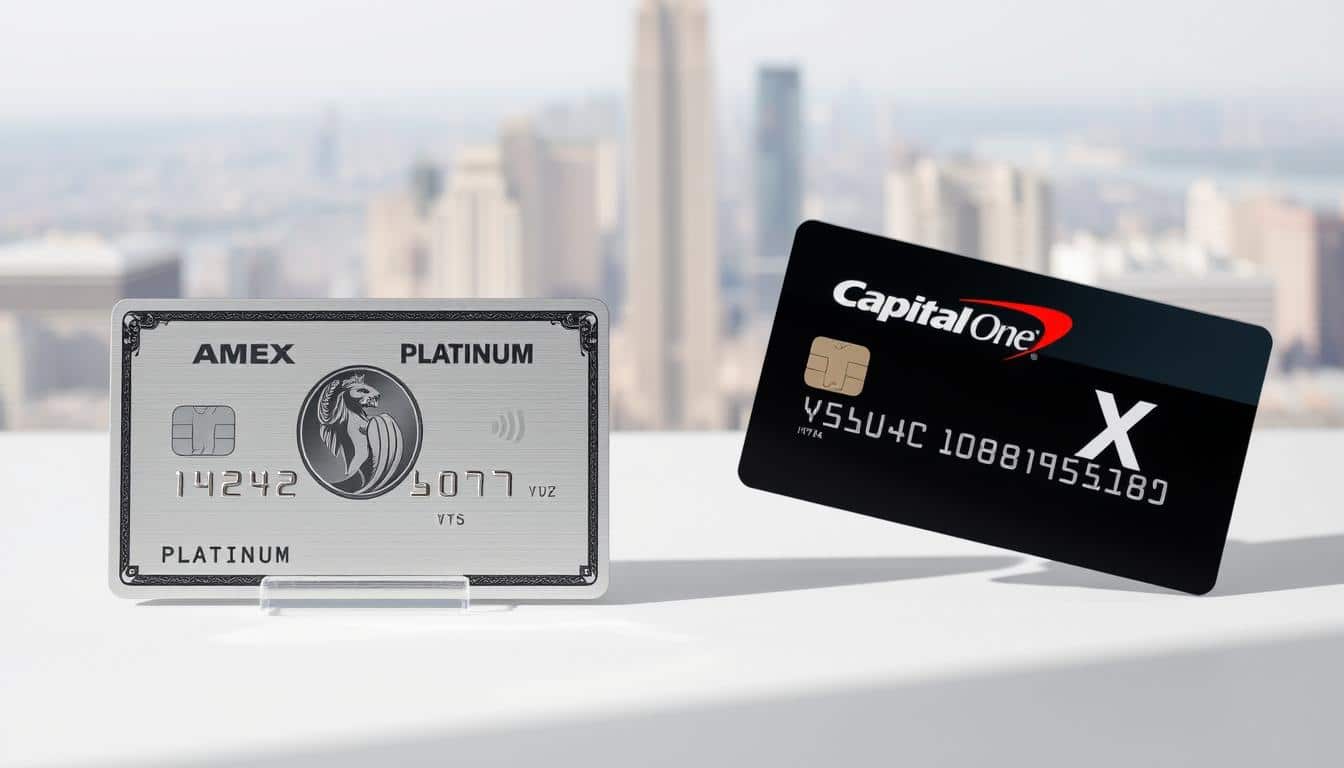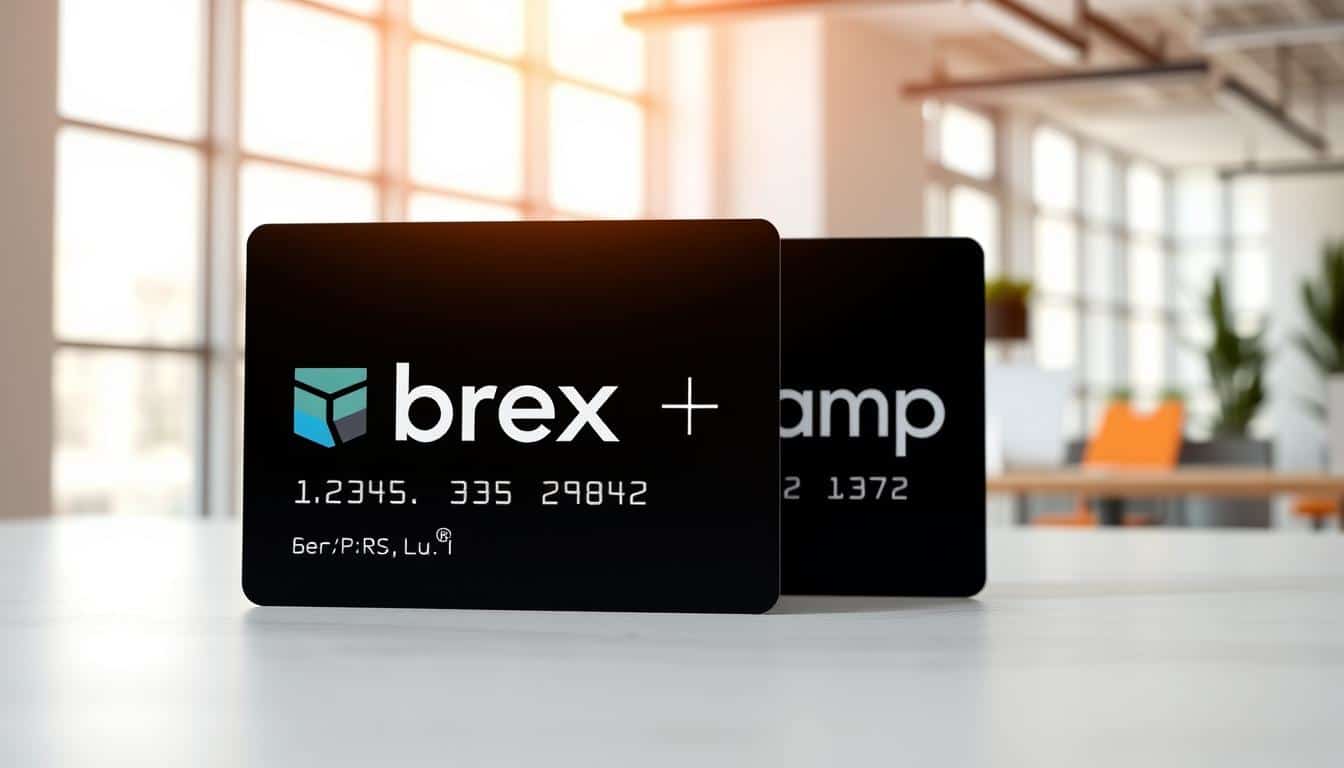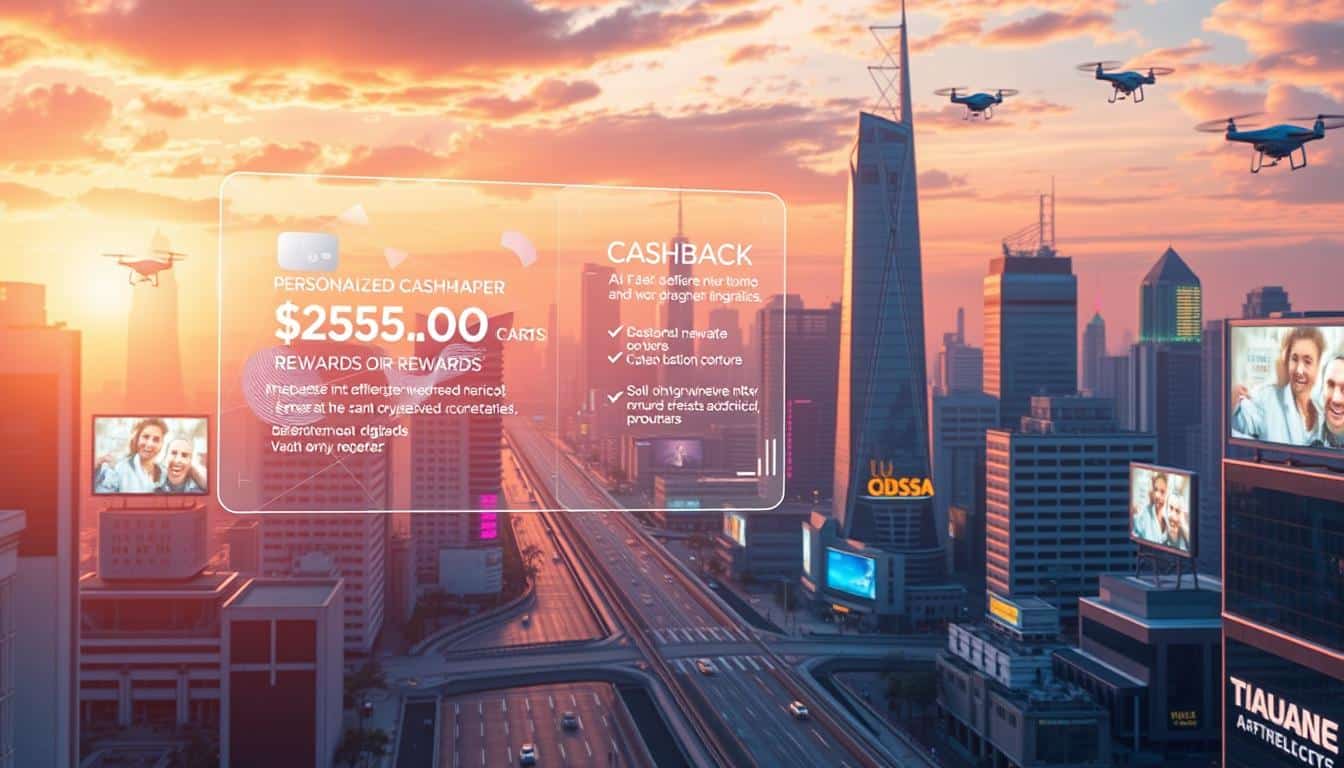Want to customize your cashback rewards?
The Bank of America Customized Cash card is a simple cashback credit card built for people who want practical, personalized rewards. With this card, you pick one top cashback category that pays an elevated rate on everyday purchases. That core feature makes the Customized Cash card a strong option for shoppers who want focused value without rotating categories or complex bonus rules.
This article will walk U.S. consumers through how the top cashback category works, who qualifies, and how to pick the right category for your spending. We’ll explain how Bank of America rewards can stack with Preferred Rewards, outline eligibility and fees, and offer real examples so you can decide if this cashback credit card fits your needs.
The tone is friendly and practical. Whether you already bank with Bank of America or you’re considering a new card, you’ll find clear steps to choose the best top cashback category and make the most of personalized rewards.
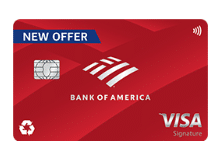
America Customized Cash Rewards
Key Takeaways
- Bank of America Customized Cash lets cardholders select a single top cashback category for higher rewards.
- The Customized Cash card is easy to manage and suits steady, predictable spending patterns.
- Bank of America rewards can increase with Preferred Rewards for those who qualify.
- This guide covers eligibility, selection strategies, fees, and real-life examples.
- Choose the top cashback category that matches your largest monthly expense to maximize returns.
Full Comparison: Bank of America® Customized Cash Rewards, Premium Rewards®, and Travel Rewards
Bank of America, one of the largest banks in the United States, provides a diverse lineup of credit cards tailored to various spending habits and customer needs.
Among its most well-known options are the Bank of America® Customized Cash Rewards Credit Card, the Bank of America® Premium Rewards® Credit Card, and the Bank of America® Travel Rewards Credit Card.
Even though all three belong to the same family of products, each one distinguishes itself with different reward systems, fees, travel benefits, and ideal user profiles.
This article breaks down how these cards differ, helping you identify which option best matches your lifestyle while outlining the key advantages and costs of each.
Overview
While these cards share some similarities — including broad acceptance, solid security from Bank of America, and reliable rewards programs — their purposes vary considerably:
- Customized Cash Rewards: Best for users who want flexible cashback without paying an annual fee.
- Premium Rewards®: Designed for frequent travelers who appreciate luxury benefits and travel credits.
- Travel Rewards: Geared toward travelers who prefer straightforward earning and no foreign transaction fees.
Below is a detailed side-by-side breakdown.
Comparison Table: Bank of America Credit Cards
| Features | Customized Cash Rewards | Premium Rewards® | Travel Rewards |
|---|---|---|---|
| Annual Fee | $0 | $95 | $0 |
| Welcome Bonus | $200 cashback after spending $1,000 in the first 90 days | 60,000 bonus points after spending $4,000 in the first 90 days (worth about $600 in travel or credits) | 25,000 bonus points after spending $1,000 in the first 90 days (worth about $250 toward travel) |
| Rewards Rate | 3% in one chosen category (gas, online shopping, dining, travel, drugstores, or home improvement) + 2% at grocery stores and wholesale clubs + 1% on other purchases | 2 points per dollar on travel and dining + 1.5 points per dollar on all other purchases | 1.5 points per dollar on all purchases + 3 points per dollar on travel through Bank of America Travel Center |
| Earning Limits | 3% and 2% categories apply to the first $2,500 spent in combined purchases per quarter, then 1% after | No limit on points earned | No limit on points earned |
| Foreign Transaction Fees | 3% | None | None |
| Travel Benefits | Basic travel protections | Up to $100 annual airline incidental credit + up to $100 every four years for TSA PreCheck® or Global Entry | No annual credits, but points redeemable for travel with no foreign transaction fees |
| Type of Rewards | Cashback | Premium travel and cashback points | Travel points |
| Best For | Shoppers who want customizable cashback | Frequent travelers who enjoy premium perks | Travelers who want simplicity and no annual fee |
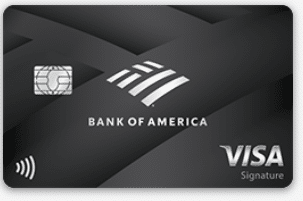
Premium Rewards
What is Bank of America Customized Cash and how it works
The Bank of America Customized Cash card puts a simple idea into practice: pick one spending category and earn a higher cashback rate there while getting a steady base rate on everything else. This section explains how Customized Cash works, what card features to expect, and the eligibility and account requirements for applicants.
Overview of card features
The card features include an elevated cashback rate for a single category the cardholder chooses, a standard cashback rate on other purchases, and occasional bonus rates for clients in Bank of America’s Preferred Rewards program. Digital card management through the Bank of America mobile app lets you view transactions, set alerts, and lock the card. Consumer protections such as zero-liability fraud protection and EMV chip security are standard.
cashback category mechanics
Selecting a top cashback category changes how rewards are applied. Purchases that match the chosen category receive the boosted percentage, while all other purchases earn the base return. Merchant category codes (MCCs) determine whether a purchase qualifies for the boosted rate, so a grocery run at a store coded under supermarkets usually counts, but the same items bought at a big-box retailer may not.
Timing of category selection matters. Some cardholders set their category to align with recurring monthly costs. Others rotate based on seasonal spending. Knowing how merchant coding works helps you capture the intended rewards when you pay.
eligibility and Bank of America account requirements
Bank of America account requirements for credit cards typically include U.S. residency and a Social Security number. Lenders ask for income and employment details during application. Credit score thresholds vary; approvals can range from fair to excellent credit depending on the offer. Existing Bank of America customers may benefit from relationship programs like Preferred Rewards that enhance rewards or offer faster approval.
| Item | What to expect |
|---|---|
| Top cashback option | Elevated rate on one chosen category, changeable in account settings |
| Base cashback | Flat percentage on all other purchases |
| Mobile and digital tools | Card controls, transaction alerts, and mobile statements via app |
| Security and protections | Zero-liability fraud protection and EMV chip technology |
| Merchant coding impact | Rewards depend on MCCs; some merchants may code differently |
| Eligibility | U.S. residency, SSN, income info, and credit review |
| Relationship benefits | Preferred Rewards members can earn higher bonus rates |
Benefits of choosing your top cashback category for rewards optimization
Choosing a top cashback category can tilt rewards toward what your household buys most. That focus helps cashback optimization by turning routine spending into higher returns without juggling multiple cards. Below is a clear look at how higher rates, timing changes for seasonal spending, and card-type differences affect your wallet.
Putting a bigger percentage on your main category yields larger dollars back. For example, if you spend $600 a month on groceries, a 3% reward gives $18 back monthly. A 1.5% flat rate on the same $600 returns $9. The concentrated approach doubles the cashback from groceries compared to a uniform low rate, which can add up fast over a year.
Flexibility to change categories and seasonal considerations
Being able to change category lets you match rewards to shifting needs. If your issuer allows you to change category monthly or quarterly, you can align with holiday shopping, back-to-school buys, or summer travel plans. Timely changes that coincide with your statement cycle help you capture maximum earnings during peak seasonal spending.
Comparison with fixed-rate and rotating-category cards
Fixed-rate cards give steady, predictable cashback on all purchases. They suit people who want simplicity and no management. Rotating-category cards offer higher rates for a set quarter, but they often require activation and depend on merchant coding at the point of sale. The Bank of America Customized Cash-style option sits between these two approaches: it can provide higher returns when you actively choose a top category, while avoiding the quarterly activation hassle typical of rotating programs.
How to select the best cashback category for your lifestyle

Picking the right top category starts with a clear view of where your money goes each month. Use a short review of recent transactions to build that picture. A focused habit of tracking makes it easier to choose cashback category that pays off.
Analyzing monthly spending to find top categories
Gather 3–6 months of credit card and checking records. Tally totals by merchant type in a simple spreadsheet or a budgeting app. This process helps you analyze spending and spot recurring high-cost areas like groceries, gas, or dining.
Sort totals by month and by category. Look for patterns: steady monthly spend beats one-off spikes when you choose a category. Use that insight to decide which category delivers the most reliable rewards.
Using Bank of America tools and statements to track purchases
Bank of America statements list transactions and merchants that make it simple to cross-check your spreadsheet. Log into the mobile app to view built-in spend reports. These spend tracking tools categorize purchases automatically and let you download CSV files for a deeper look.
Try third-party aggregators if you want a second opinion. Export Bank of America statements, import to your tool of choice, and compare results. That extra step confirms which category truly drives the most cashback value.
Tips for cardholders with mixed spending patterns
Households with balanced expenses need a practical approach. Pick the category with the highest predictable monthly spend or the one you cannot easily shift to another payment method. This mixed spending strategy reduces guesswork and preserves reward value.
Consider pairing the card with a flat-rate cashback card to cover varied purchases. If the Bank of America product allows category changes, rotate your top choice when seasonal spending shifts. Map recurring eligible expenses to the card to maximize returns over time.
Maximizing rewards: strategies and practical tips
Use a few simple moves to maximize rewards on the Bank of America Customized Cash card. Start by linking your Merrill or Bank of America checking and savings accounts to unlock better value. Small changes in timing and pairing can add up fast.
Pairing the card with other Bank of America benefits
Join Preferred Rewards if you can meet the balance thresholds. That program boosts earnings on eligible Bank of America credit cards and can lift your base cashback rate. Link your accounts, confirm qualifying balances, and watch bonus multipliers apply to select categories.
Look for limited-time bonus offers from Bank of America and Merrill. Combine those promotions with Preferred Rewards multipliers to strengthen reward stacking and extract more value from big purchases.
Timing category changes for maximum payoff
Plan category updates around your billing cycle. Change your top category before the new statement period starts so purchases post to the intended cycle. Set calendar reminders for seasonal shifts like holiday shopping or summer travel.
For large planned expenses, move your category ahead of the charge. This ensures the spend lands in the higher-earning category and improves returns on one-time big buys.
Avoiding common mistakes that reduce cashback
- Misreading merchant category codes can lead to missed rewards; check receipts when unsure.
- Failing to change categories in time erodes potential earnings; use reminders for category timing.
- Carrying a balance often costs more in interest than you earn in cashback; pay statements in full when possible.
- Ignoring redemption options and caps can leave value on the table; review terms for exclusions and bonus limits.
Follow these tactics to reduce cashback pitfalls and keep reward stacking legal and efficient. Small routines yield steady gains when you aim to maximize rewards with intent and attention.
Fees, APRs, and fine print to consider
Before you rely on rewards, check the small print. Credit card details can shift how valuable rewards are. This part breaks down interest rates, common fees, and the rules that govern cashback redemption and account use so you can protect your net benefit.
Understanding interest rates and when they matter
New credit card accounts often carry APRs that vary by creditworthiness. Typical ranges for many cards fall between the mid-teens to low-twenties percent. Carrying a balance can wipe out any cashback gains because interest accrues daily on unpaid balances.
Paying in full each month preserves rewards. If you expect to carry a balance, run the math: high APR charges vs. the value of the cashback you earn. That comparison often shows paying off the balance first is the smarter financial move.
Annual fees, foreign transaction fees, and other charges
Many cashback cards, including popular Bank of America offerings, come with no annual fee. Still, confirm current card terms and conditions to be sure. Some cards waive the annual fee while others charge one for premium perks.
If you travel overseas, a foreign transaction fee can add 1% to 3% on each purchase. Balance transfer fees, cash advance fees, and late payment penalties are common extras. Review the Cardmember Agreement to see exact rates and thresholds that could affect your overall value.
Terms related to cashback redemption and expiration
Redemption options typically include statement credit, direct deposit to a Bank of America checking or savings account, gift cards, or online shopping credits. Minimum redemption thresholds may apply, so check how small redemptions are handled.
Cashback is usually treated as a purchase rebate and not taxable income for most consumers, though individual tax situations vary. Rewards rarely expire while the account is open and in good standing, but the card terms and conditions will state any exceptions and the rules for lost or unused rewards.
| Item | What to check | Why it matters |
|---|---|---|
| APR | Range and how it changes after intro periods | High APRs can erase cashback value if you carry a balance |
| Annual fee | Amount and first-year waivers | Fees can offset rewards for low spenders |
| Foreign transaction fee | Percentage charged on international purchases | Raises travel costs and lowers effective rewards |
| Redemption rules | Methods, minimums, and timing | Affects access to cashback redemption and cash flow |
| Other charges | Balance transfer, cash advance, late fees | Unexpected costs that reduce net rewards |
Read the Cardmember Agreement before you apply. That document lists exact rates, fee schedules, and the full card terms and conditions. A quick review saves surprises and helps you keep rewards working for you instead of costing you money.
Comparing Bank of America Customized Cash to other cashback cards
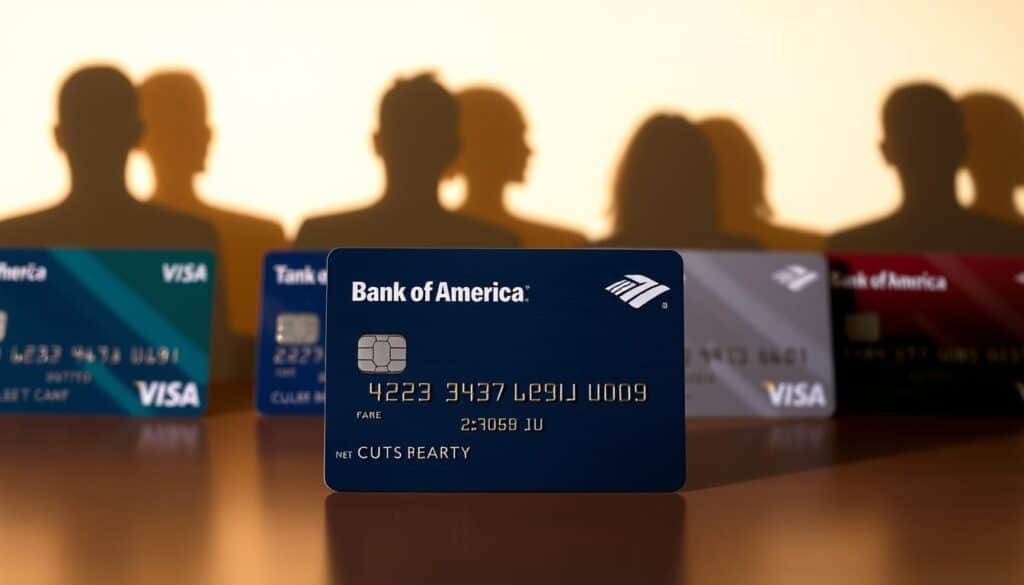
Picking a card means weighing how you spend, how much you want to track categories, and whether bank loyalty matters. Below are clear comparisons to help you compare cashback cards and decide where Bank of America Customized Cash fits among familiar names.
Head-to-head with popular competitors
Chase Freedom Flex uses rotating categories and offers strong bonus points when you activate each quarter. That can boost rewards but requires regular attention.
Citi Double Cash gives a simple flat rate on all purchases, making it easy to use without category tracking.
Discover it pairs rotating categories with a generous first-year match in past offers, which can raise the effective return for new cardholders.
When Customized Cash is the best option
If one spending category dominates your budget, Customized Cash can out-earn flat-rate cards. Pick a top category once and earn higher rewards without quarterly activations.
Bank of America clients on the Preferred Rewards program can multiply cashback, which boosts long-term value versus some rivals.
When another card might serve you better
Choose Citi Double Cash if you want a true set-it-and-forget-it flat rate across all purchases.
Opt for Chase Freedom Flex or Discover it if you enjoy rotating categories and can maximize bonus quarters, or if a sign-up offer creates short-term advantage.
Frequent international travelers should favor cards with no foreign transaction fees, since Customized Cash may charge those fees depending on the product.
Below is a concise comparison table showing key contrasts to help you evaluate Customized Cash vs competitors.
| Feature | Customized Cash | Chase Freedom Flex | Citi Double Cash | Discover it |
|---|---|---|---|---|
| Primary reward style | Choose one top cashback category | Rotating quarterly categories + points | Flat 2% cash back | Rotating categories + first-year match historically |
| Ease of use | Simple once you set a category | Requires quarterly activation | Very simple, no tracking | Requires activation and tracking |
| Best for | Consistent high-spend category holders and Bank of America customers | Category optimizers who can activate each quarter | Users who want steady rewards without monitoring | New cardholders seeking starter boosts and rotating rewards |
| Bonus potential | Moderate; increases with Preferred Rewards | High in bonus quarters | Low; constant rate | High first year in past offers |
| Foreign transaction fees | Varies by product; often applies | Varies; some Chase cards waive fee | Varies by Citi card; many charge fees | Some Discover cards charge fees |
Real-life examples and case studies of category selection
Practical examples help you see how a top cashback choice plays out in real households. The short scenarios below use clear numbers and tips to show differences between a targeted 3% top category and common flat-rate cards. These real-life case studies make trade-offs easy to spot and help you plan a life stage card strategy.
Grocery-focused household
A family in Seattle spends $800 per month on groceries. With a 3% top category, they earn $24 monthly and $288 annually.
Compare that with a 1.5% flat-rate card: $800 × 1.5% = $12 per month, or $144 per year. The targeted top category yields $144 more annually.
Tips to boost grocery cashback: use the card for grocery delivery orders, charge purchases at club stores when merchant coding counts as grocery, and review statements for miscategorized charges from big-box retailers. Small fixes add up over a year.
Frequent traveler choosing dining or travel
A business traveler racks up $600 monthly in dining and travel expenses combined. Selecting travel or dining as the top category at 3% produces $18 per month, $216 per year.
Pairing this card with a travel-focused card from American Express or Chase can capture bonus categories like airfare or hotel spend and boost overall rewards. Watch foreign transaction fees on non-U.S. purchases; high fees can erode travel dining rewards unless your backup card waives them.
Use Bank of America travel benefits where available, and put incidental charges on the card that offers the best net value after fees.
How changing life stages affects category choice
Priorities shift when family circumstances change. New parents often move spending from dining out to groceries. Retirees may see more spending on medical expenses and utilities. A thoughtful life stage card strategy means reviewing categories every 6–12 months.
Example: a couple switches from dining to groceries after a child is born. Their $400 in monthly dining moves to groceries, raising grocery totals and making the grocery top category more valuable. Another example: a household moving to a single-income model shifts toward bulk grocery and utility payments, so choosing a category that captures those is sensible.
| Scenario | Monthly Spend | Top Category Rate | Annual Rewards (Top Category) | Annual Rewards (1.5% Flat) | Net Annual Gain |
|---|---|---|---|---|---|
| Grocery-focused family | $800 groceries | 3% | $288 | $144 | $144 |
| Frequent traveler (dining + travel) | $600 combined | 3% | $216 | $108 | $108 |
| New parents (shift dining → groceries) | $400 shifted | 3% | $144 | $72 | $72 |
These cashback examples show how a focused top category can beat a flat-rate card for many households. Review spending, watch merchant coding, and revisit choices as life changes to keep rewards aligned with real needs.
How to apply, manage your account, and change your top category
Getting started with the Bank of America Customized Cash card is simple. Below you will find clear steps to apply for Customized Cash, ways to manage account settings and instructions to change cashback category when your spending shifts.
Step-by-step application process
Visit Bank of America’s credit cards page and select the Customized Cash card. Complete the online form with personal details, Social Security number, income and employment information. Use the pre-qualification tool first to check likely approval without a hard credit pull. Review card terms, confirm accuracy, and submit your application. Approval times vary; you may receive an instant decision or a follow-up request for documents.
Managing your category selection in online and mobile banking
Sign in to online banking or open the Bank of America mobile app to view card controls. Navigate to your credit card account, find the rewards or Customize section, and view the current top cashback category. To change cashback category, select a new option and confirm. Note the timing rules so your change takes effect at the desired billing cycle.
Use the transaction view to track qualifying purchases. If items appear in the wrong merchant category, check transaction details and merchant codes. The online portal and Bank of America mobile app both show posted rewards and pending activity so you can confirm the boosted rate applied correctly.
Customer support options and troubleshooting tips
If you need help, contact Bank of America customer service by phone, secure message through online banking, or visit a local branch for in-person assistance. For miscategorized purchases, keep receipts and merchant information. Use secure messaging to open a dispute for missing rewards and provide supporting documentation.
When rewards do not post, review statement posting dates and pending transactions. If a merchant’s merchant category code caused the issue, ask customer service to appeal the coding or to request a manual review. Record reference numbers for every interaction to streamline follow-ups.
| Action | Where to do it | What to prepare |
|---|---|---|
| Apply for Customized Cash | Bank of America credit cards page; pre-qualification tool | SSN, income, employment details, contact info |
| Manage account settings | Online banking or Bank of America mobile app | Login credentials, device authentication |
| Change cashback category | Rewards or Customize section in account | Decide timing based on billing cycle |
| Report missing rewards | Customer service phone, secure message, branch | Receipts, transaction dates, merchant details |
| Dispute merchant coding | Secure message or phone with customer service | Transaction record, merchant contact if available |
Conclusion
Choosing a top cashback category on the Bank of America Customized Cash card is one of the simplest moves to maximize Bank of America rewards. When you align the customize cashback category with your most consistent spending—groceries, gas, or utilities—you boost your return on everyday purchases and turn routine bills into meaningful savings with personalized rewards.
To make this the best cashback strategy for you, review recent statements, use Bank of America’s online tools to track spending, and pick the category that shows up most often. If you qualify for the Preferred Rewards program, factor that into your plan for higher earnings. Also time category changes around major expenses to capture the most value.
Remember to weigh fees and APRs and compare the card with other offers if you need travel perks or rotating categories. The real key is to pay balances in full whenever possible so cashback stays net savings. Revisit your category choice periodically as life changes; doing so keeps your personalized rewards working as hard as you do.
FAQ
What is the Bank of America Customized Cash card and how does choosing a top cashback category work?
Who is eligible to apply for the Customized Cash card?
How do merchant category codes (MCCs) affect whether a purchase counts for my chosen category?
How often can I change my top cashback category and when should I time changes?
What are practical steps to choose the best category for my lifestyle?
How much more will I earn by choosing a top category versus using a flat-rate card?
How does Bank of America Preferred Rewards affect cashback earnings?
Are there fees, foreign transaction charges, or APR considerations I should know?
How do I redeem cashback and do rewards expire or count as taxable income?
How does the Customized Cash card compare to rotating-category or flat-rate cards like Chase Freedom Flex, Citi Double Cash, or Discover it?
What should I do if purchases don’t earn the boosted rate or rewards are missing?
Can merchants like Walmart, Amazon, or Costco count as grocery or wholesale clubs for boosting rewards?
Should I always switch my top category when life changes, like having kids or switching jobs?
How do I apply and manage my Customized Cash card online or in the Bank of America app?
Conteúdo criado com auxílio de Inteligência Artificial

